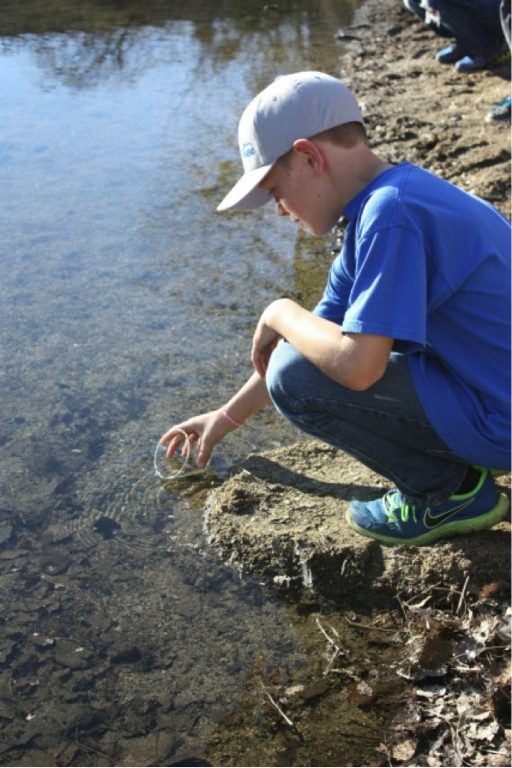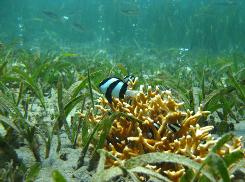|
|
|
April 28, 2014
The adipose fin has been both underrated and, it now seems, misunderstood. Its appearance hasn't helped matters much. The fin often consists of just a fleshy nub on a fish's back between the dorsal fin and tail (such as in salmonids). This has lead to theories that the adipose fin is merely the vestigial remnant of a once useful, larger fin. Researchers have also long assumed that such a fin with no obvious utility or function must have evolved only once, then just happened to stick around throughout history as a kind of accident. But a recent study by researchers at the University of Chicago and the University of Kansas proves otherwise, demonstrating that the adipose fin has, in fact, arisen multiple times in the evolution of bony fishes ( Stewart et al. 2014). Published in the journal Proceedings of the Royal Society B, their findings suggest this overlooked fin may be more important than once thought - although its actual purpose still remains unclear.
The scientists used genetic data from more than 200 fish species, as well as information from the fossil record, to construct an evolutionary tree showing the relationships among fishes with and without adipose fins. Using statistical models, they predicted when the fins appeared, and in which species. Their results indicate adipose fins arose at least twice - once in the catfishes, and once in another group of fishes including salmon, smelt, and lanternfishes - and may have evolved even more times. The team also documented an array of skeletal structures inside some adipose fins, from spines to fin rays, which also arose independently. The researchers' discovery means that adipose fins are actually an example of convergent evolution, in which two animals hit upon a similar trait by separate evolutionary pathways, rather than inheriting it from a shared ancestor. Thus, the evolution of adipose fins in salmon and catfish is a bit like the evolution of wings in birds and bats.
That a trait evolved multiple times doesn't necessarily mean it is advantageous. But the fact that adipose fins have also stuck around for millions of years suggests they serve some function, the authors maintain. Other scientists have found that the adipose fin contains nerve tissue ( Buckland-Nicks et al. 2011), and also discovered that it in some species the fin may act as a flow sensor for the fish's tail in turbulent water ( Reichmen and Temple 2004). The role of the fin may vary across the more than 6,000 species in which it's found, as it hardly represents a specialized adaptation. Adipose fins are found on fishes both large and small, living in habitats as different as rivers and the deep sea. The fins themselves also take on a range of sizes, including the notably large adipose fin found in the catfish Mystus albolineatus shown above, which lives in the Mekong River basin. Whatever its purpose, one thing is now clear - this fin is more than just a fluke. |
|
|
Recent Blog Posts
|
Salmon release
 As April comes to an end, the fall-run Chinook salmon outmigration period will soon be winding down, as juvenile salmon make their way throughout the watersheds of California's Central Valley towards the ocean. This also signifies the conclusion of another successful year of the Salmon in the Classroom program, which helps K-12 grade students throughout the state learn about the salmon lifecycle, and the difficult journey these fish undertake in order to survive to adulthood and return to spawn. Many classrooms also raised salmon eggs in their classrooms. FISHBIO visited a few local classrooms to walk students through the Salmon Survival Pyramid, or the number of fish that survive to each stage of their lifecycle. Recently, we accompanied 4th grade students on an afternoon field trip to Knights Ferry... Read more >
|
|
|
|
IN THE NEWS: Recent stories you might have missed...
|
California drought putting fish, birds and tree species at risk
Sacramento Bee
California's drought is imperiling tricolored blackbirds, large trees and native fish, with some of the affected species already on the state's endangered list and others likely headed there because of rapidly declining numbers, scientists say."The problems created by the drought are just a harbinger of things to come," said Peter Moyle, a professor at the UC Davis Center for Watershed Sciences, which hosted a daylong Capitol summit Friday... Read more >
|
International team sequences rainbow trout genome
Science Daily
 Using fish bred at Washington State University, an international team of researchers has mapped the genetic profile of the rainbow trout, a versatile salmonid whose relatively recent genetic history opens a window into how vertebrates evolve. The 30-person team, led by Yann Guiguen of the French National Institute for Agricultural Research, reports its findings this week in Nature Communications. The investigators focused on the rate at which genes have evolved since a rare genome doubling event occurred in the rainbow trout... Read more >
|
Seafood study: Up to 32 percent imported to U.S. is caught illegally
Washington Post

The seafood on your dinner plate is starting to look a little fishy.
A new study that examined illegal and unreported marine harvests brought into the United States found that some fish shouldn't be on U.S. tables. Up to 32 percent of imported wild shrimp, crab, salmon, pollock, tuna and other catch is poached, according to the study. Scientists are concerned about illegal fishing because the world's oceans can barely sustain legal seafood harvests... Read more >
|
Fish losing survival instinct in acidic oceans
Bangkok Post
 Fish are losing their survival instinct -- even becoming attracted to the smell of their predators -- as the world's oceans become more acidic because of climate change, a new research report said on Monday. The study of fish in coral reefs off the coast of Papua New Guinea -- where the waters are naturally acidic -- showed the animals' behaviour became riskier. "Fish will normally avoid the smell of a predator, that makes perfect sense," lead author Professor Philip Munday from Australia's James Cook University told AFP... Read more > Fish are losing their survival instinct -- even becoming attracted to the smell of their predators -- as the world's oceans become more acidic because of climate change, a new research report said on Monday. The study of fish in coral reefs off the coast of Papua New Guinea -- where the waters are naturally acidic -- showed the animals' behaviour became riskier. "Fish will normally avoid the smell of a predator, that makes perfect sense," lead author Professor Philip Munday from Australia's James Cook University told AFP... Read more >
|
Technology could replace observers aboard tuna vessels
FIS

Several Spanish tuna vessels operating in the Indian Ocean are in the "testing phase" to use technological equipment for replacing aboard observers. The idea of the promoters of the initiative is to use adaptive technology to work on board vessels in order to monitor fishing activities in waters where the safety is compromised, such as the Indian Ocean. In these waters, the fishermen face constant threats of "pirates." The aim is also to have cameras on board the vessels and collect data "to the minute"... Read more >
|
|
|
|
|
|